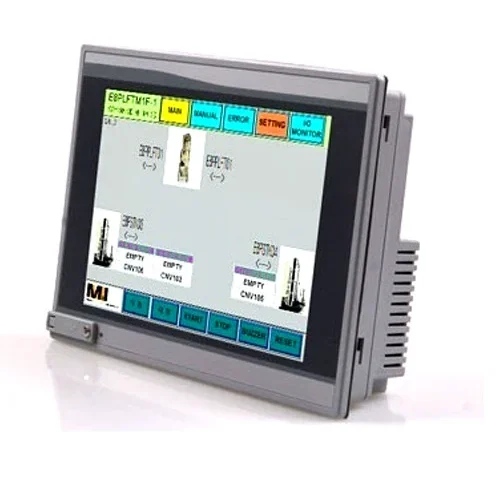
Introduction
Technology has evolved modern industries into more intelligent and efficient ones. The most important piece of equipment used in industrial automation could be the HMI display panel. HMI stands for Human-Machine Interface, and it is a very important element in making it easy for operators to control and run machines. This blog will lead you through what an HMI display panel is, how it works, its benefits, and where it’s used.
What is an HMI Display Panel?
An HMI display panel is an exhibit device that helps human beings communicate with machines. It is used in the manufacturing industries, factories, and most automated appliances to provide real-time information about machines and processes. The HMI display may show information such as temperature, pressure, velocity, and the status of systems. The operators may also use it in typing commands and managing different operations.
How Does an HMI Display Panel Work?
The HMI display is connected to different machines and sensors. It gets data and displays it on the screen in front of the operator. The panel allows the user to interact with the machine by engaging with the screen, buttons, or a keyboard. It works on different software systems that aid in processing and handling data.
Most HMI displays are preloaded with advanced touchscreens that are easy to operate. They can be connected to computers, programmable logic controllers (PLCs), and other control systems to allow for smooth running.
Advantages of Using an HMI Display Panel
Using an HMI display panel has several advantages in commercial and industrial environments. Some of the most notable advantages are:
1. Easy to Use
The touch interface enables the operators to use the machines with ease. Graphic display provides clear information.
2. Increases Efficiency
The HMI display enables the operators to see the systems in real-time, reducing the likelihood of errors and improving overall efficiency.
3. Minimizes Downtime
With the provision of real-time information and alert messages, the HMI display enables early fault detection. This reduces downtime and prevents costly repair work.
4. Enhances Safety
Operators have the ability to operate machines remotely through the HMI display panel, minimizing accidents and injuries.
5. Cost-Effective
An HMI display panel minimizes the use of manual labor and maximizes productivity, resulting in long-term cost savings.
Where Are HMI Display Panels Used?
1. Manufacturing Industries
Manufacturing factories use HMI display panels to monitor production lines, operate robotic arms, and manage automatic systems.
2. Power and Energy Plants
Power generation plants use HMI display panels for generator control, turbine control, and monitoring of energy distribution.
3. Transportation Systems
Traffic controls, railways, and airports use HMI display panels to monitor timetables, signals, and security systems.
4. Water and Waste Management
Water treatment plants use HMI display panels for controlling pumps, monitoring water levels, and processing purification.
5. Food and Beverage Industry
HMI display panels are offered to food processing firms that assist them in maintaining the levels of hygiene, tracking the temperatures, and managing the packaging machines.
Choosing the Correct HMI Display Panel
If you are buying an HMI display panel, the following are aspects you should consider:
1. Screen Resolution and Size
Choose a screen size suitable for your application. A high-resolution screen provides good image quality and is easy to use.
2. Touchscreen Feature
The majority of the newer HMI displays are touchscreen compatible. Select one that offers sufficient sensitivity and ruggedness.
3. System Compatibility
Ensure the HMI display is compatible with your existing machines, software, and communication protocols.
4. Environmental Conditions
If your working environment is dusty, humid, or high temperature, choose an HMI display that is suitable for rugged environments.
5. Ease of Programming
Select an HMI display panel that can be programmed and easily customized according to your specific needs.
Conclusion
The HMI display panel is a valuable industrial automation device. It increases communication between the equipment and the operator, which boosts productivity as well as safety. In manufacturing, energy, transportation, or water management, an HMI display makes operations easier and more reliable. In selecting an HMI display, consider screen size, compatibility, and ruggedness to achieve its full potential for your application.


